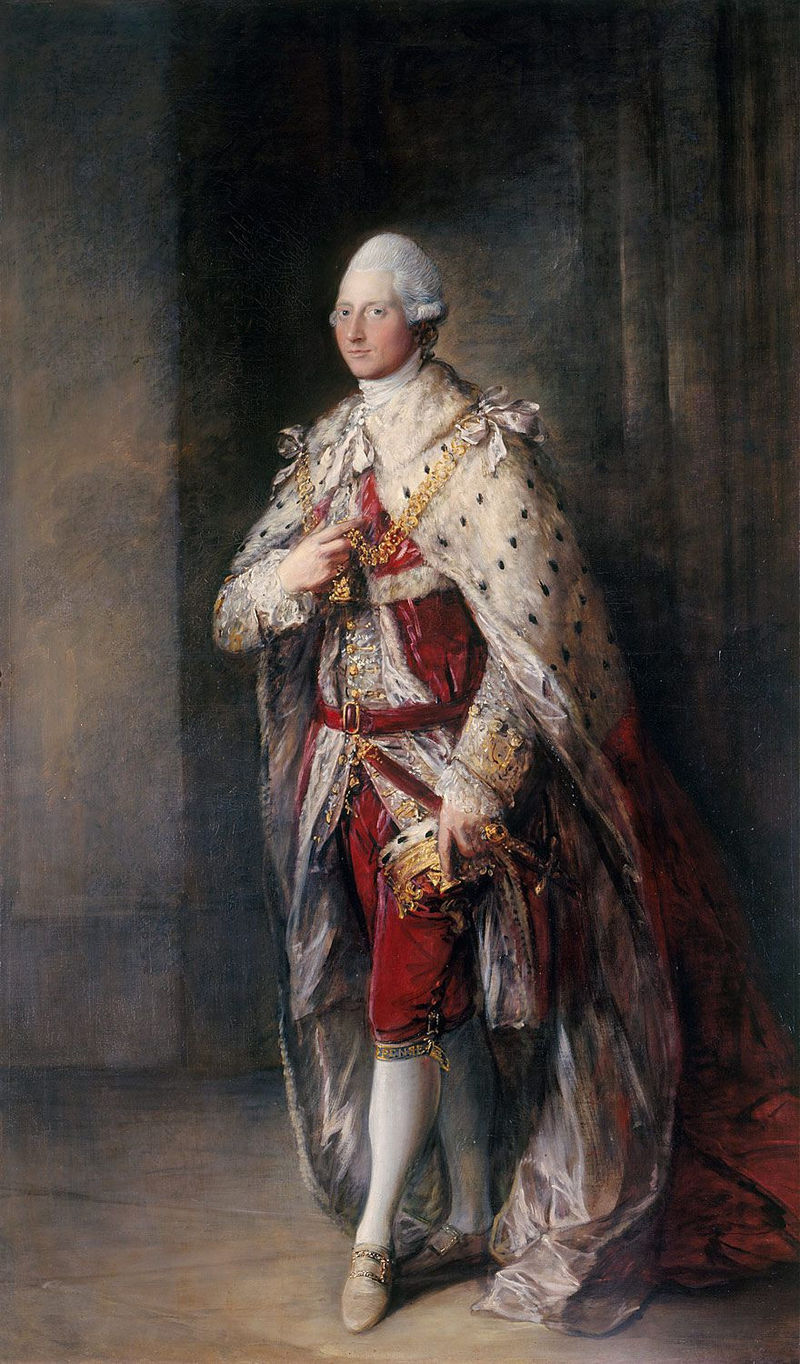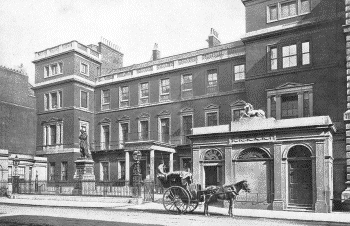by Susan Flantzer
© Unofficial Royalty 2023

Prince Henry of Wales, Duke of Cumberland and Strathearn; Credit – Wikipedia
The marriage of Prince Henry of Wales, Duke of Cumberland and Strathearn to a commoner was the cause of the Royal Marriages Act in 1772. Henry was born on November 7, 1745, at Leicester House which stood on present-day Leicester Square in London, England. He was the sixth of the nine children and the fourth of the five sons of Frederick, Prince of Wales and Princess Augusta of Saxe-Gotha-Altenburg. His paternal grandparents were King George II of Great Britain and Caroline of Ansbach. William Henry’s maternal grandparents were Friedrich II, Duke of Saxe-Gotha-Altenburg and Magdalene Auguste of Anhalt-Zerbst. He was christened Henry Frederick on November 30, 1745, at Leicester House.

Family of Frederick, Prince of Wales painted in 1751 after his death; Front row: Henry, William, Frederick; Back row: Edward, George, Augusta, Dowager Princess of Wales holding Caroline Matilda, Elizabeth, Louisa; Credit – Wikipedia
Henry had eight siblings:
- Princess Augusta of Wales, Duchess of Brunswick (1737 – 1813) married Karl Wilhelm Ferdinand, Duke of Brunswick, had seven children
- King George III of the United Kingdom (1738 – 1820) married Charlotte of Mecklenburg-Strelitz, had fifteen children
- Prince Edward of Wales, Duke of York (1739 – 1767) died aged 28, unmarried
- Princess Elizabeth of Wales (1740 – 1759) died aged 18, unmarried
- Prince William Henry of Wales, Duke of Gloucester (1743 – 1805) married Maria, Countess Waldegrave, had three children
- Princess Louisa of Wales (1749 – 1768) died aged 19, unmarried
- Prince Frederick of Wales (1750 – 1765) died aged 15, unmarried
- Princess Caroline Matilda of Wales, Queen Consort of Denmark and Norway (1751 – 1775) married Christian VII, King of Denmark and Norway, had two children including King Frederik VI of Denmark and Norway

Prince Henry, 1754; Credit – Wikipedia
In 1751, when Henry was not five years old, his father died, leaving a pregnant widow with eight children. Henry’s thirteen-year-old eldest brother George was now the heir to the throne and was created Prince of Wales by his grandfather King George II. Upon the death of King George II in 1760, Henry’s eldest brother succeeded as King George III. In 1766, just before his twenty-first birthday, his brother King George III created Henry Duke of Cumberland and Strathearn and Earl of Dublin, and named him a Privy Councillor. Henry was made a Knight of the Order of the Garter the following year. He also served as Ranger of Windsor Forest and Great Park, from 1766 until he died in 1790.
In 1768, Henry entered the Royal Navy as a midshipman and was initially sent to Corsica in HMS Venus. Although Henry was forbidden from assuming any command, he was named a Rear Admiral in 1769, a Vice Admiral in 1779, an Admiral in 1778, and Admiral of the White in 1782. In 1775, Henry founded the Cumberland Fleet, which would later become the Royal Thames Yacht Club, the oldest continuously operating yacht club in the world. He was also instrumental in Brighton‘s development as a popular seaside resort.
In 1770, Henry caused some embarrassment to his brother King George III. Richard Grosvenor, 1st Earl Grosvenor accused Henry of criminal conversation (adultery) with his wife Henrietta Vernon, resulting in a lawsuit. Grosvenor was awarded damages of £10,000, which together with legal costs, amounted to an award of £13,000 (more than £3,000,000 in 2023) which King George III was obliged to pay.

Anne, Duchess of Cumberland and Strathearn; Credit – Wikipedia
Henry further annoyed his brother King George III when, on October 2, 1771, he married Anne Horton, daughter of Simon Luttrell, 1st Earl of Carhampton, and the widow of Christopher Horton of Catton Hall. King George III did not approve of the marriage as Anne was a commoner and previously married. This marriage led to the passing of the Royal Marriages Act in 1772. The act stipulated that no descendant of King George II under the age of 25, with the exception of descendants of princesses who married into foreign families, could marry without obtaining the sovereign’s consent. Over the age of 25, those wishing to marry without obtaining consent needed to inform the Privy Council of their intention. They would then be free to marry in a year if no objection had been raised by Parliament. The Royal Marriages Act was repealed on March 26, 2015, as a result of the 2011 Perth Agreement. The Royal Marriages Act’s provisions were replaced by less limited restrictions that apply only to the first six people in the line of succession to the British throne.
However, King George III did not know that his brother William Henry, Duke of Gloucester and Edinburgh had secretly married Maria Waldegrave, Countess Waldegrave, née Walpole in 1766. For six years, King George III believed that his brother William Henry was a bachelor and that Maria was his mistress. In September 1772, five months after the Royal Marriages Act was passed, William Henry found out Maria was pregnant and confessed to his brother that he was married. King George III was quite upset not only by the marriage but also by William Henry’s deception. The King appointed a committee consisting of Frederick Cornwallis, Archbishop of Canterbury, Richard Terrick, Bishop of London, and Henry Bathurst, 2nd Earl Bathurst, Lord High Chancellor to investigate the validity of the marriage. Because the provisions of the Royal Marriages Act could not be applied retroactively, William Henry and Maria’s marriage was considered valid. Their children were styled His/Her Highness Prince/Princess and used the territorial designation of Gloucester as great-grandchildren in the male line of King George II. However, due to the anger of King George III, Maria, now Duchess of Gloucester, was never received at court.

Cumberland House, circa 1896
Henry and Anne, whose marriage was childless, moved to York House, renamed Cumberland House, on Pall Mall in London. King George III refused to allow Anne to use the title of Duchess of Cumberland although she was commonly addressed as Duchess of Cumberland. Henry, Anne, and anyone who visited their home were not received at court. Some of the time, Henry and Anne lived in continental Europe to avoid creditors. In 1780, both Henry and his brother William Henry were partially reconciled with their brother King George III.
On September 18, 1790, Prince Henry, Duke of Cumberland and Strathearn suddenly died in Pall Mall, just outside his home, Cumberland House, in London, aged 44. He was buried in Westminster Abbey in London, in the Hanover vault under the central part of the Henry VII Chapel, the last royal burial in Westminster Abbey. A small inscribed stone in the black and white pavement of Westminster Abbey reads: Henry Fred. D. of Cumberland 4th son of Frederick P. of Wales 1790.

Henry’s grave marker; Credit – www.findagrave.com
Henry left large debts and Anne was given a small pension by King George III, which emphasized that he did not consider her a member of the royal family. Pursued by creditors, Anne sold Henry’s collection of manuscripts and other possessions. In 1800, she surrendered Cumberland House to the banks that held mortgages on it. Anne moved to the small town of Gorizia in the Austrian Empire, now in Italy. She died in Gorizia on December 28, 1808, at the age of sixty-five, and was buried there.
This article is the intellectual property of Unofficial Royalty and is NOT TO BE COPIED, EDITED, OR POSTED IN ANY FORM ON ANOTHER WEBSITE under any circumstances. It is permissible to use a link that directs to Unofficial Royalty.
Works Cited
- Anne, Duchess of Cumberland and Strathearn (2023) Wikipedia. Available at: https://en.wikipedia.org/wiki/Anne,_Duchess_of_Cumberland_and_Strathearn (Accessed: 14 May 2023).
- Bloks, Moniek. (2018) Anne Horton & Maria Walpole – The Royal Marriages Act 1772, History of Royal Women. Available at: https://www.historyofroyalwomen.com/anne-horton/anne-horton-maria-walpole-the-royal-marriages-act-1772/ (Accessed: 14 May 2023).
- Prince Henry, Duke of Cumberland and Strathearn (2023) Wikipedia. Available at: https://en.wikipedia.org/wiki/Prince_Henry,_Duke_of_Cumberland_and_Strathearn (Accessed: 14 May 2023).
- Royal Marriages Act 1772 (2023) Wikipedia. Available at: https://en.wikipedia.org/wiki/Royal_Marriages_Act_1772 (Accessed: 14 May 2023).
- Weir, Alison. (1989) Britain’s Royal Families: The Complete Genealogy. London: Vintage Books.
- Williamson, David. (1996) Brewer’s British Royalty: A Phrase and Fable Dictionary. London: Cassell.
